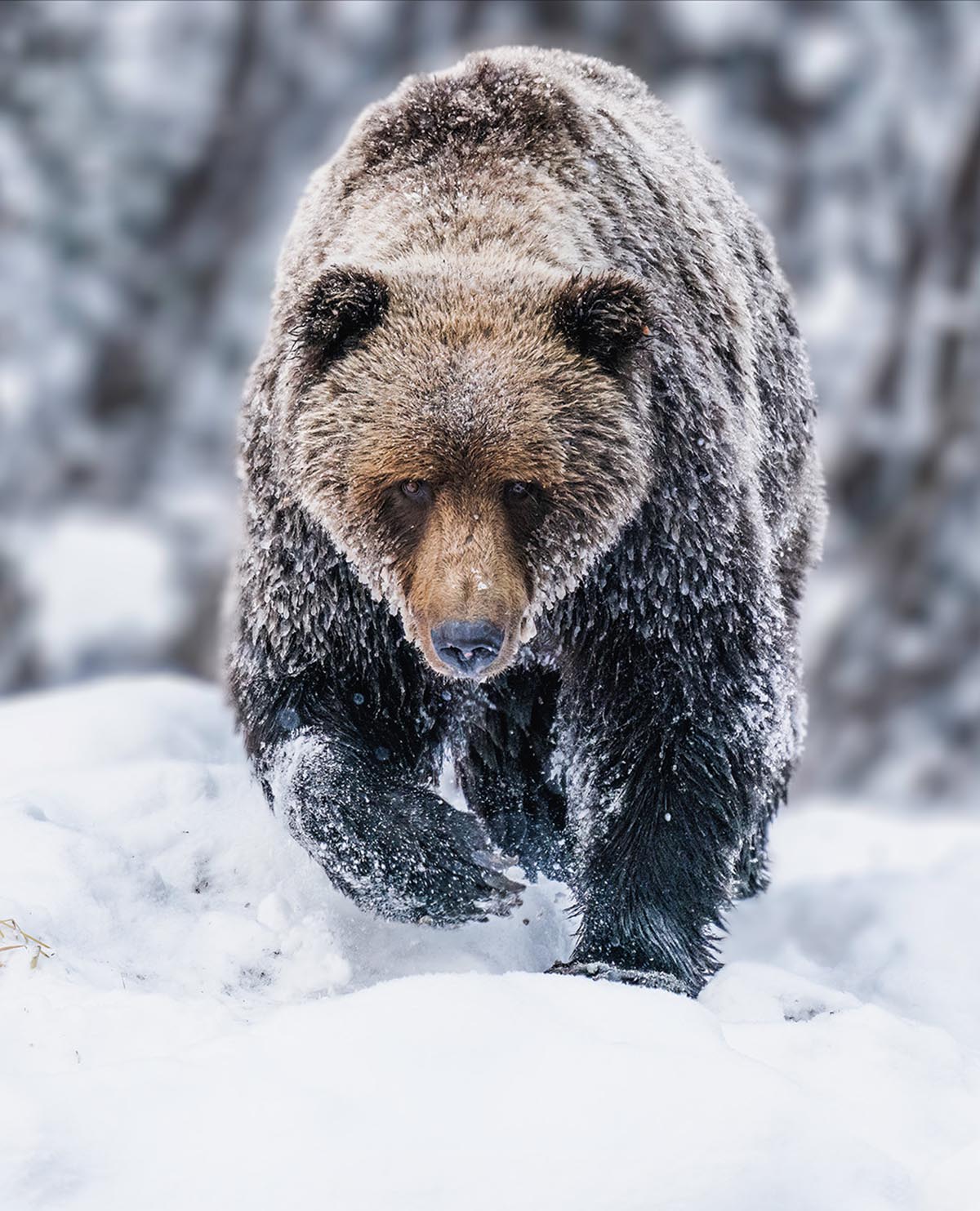The giants of the animal kingdom fill the pages of Marko Dimitrijevic’s new wildlife photography book “Big” (teNeues), which he coauthored with fellow photographer Amos Nachoum. The book conveys the photographers’ dramatic face-to-face interactions with some of the largest animals in the world.

“FIGHTER JET”
GREAT WHITE SHARK, MEXICO
This photo of a great white shark was made with a Canon EOS 5D Mark IV camera in a Seacam housing. Dimitrijevic was inside a protective underwater cage near Guadalupe Island off the Pacific coast of Mexico, he explains. He wanted a frontal view of a shark; so many images document sharks from the side, he says. “After hours of waiting I finally got my chance.” Usually, he uses a wide-angle lens underwater, such as a 16-35mm, because water is 800 times denser than air and clarity is lost when photographing at more than a 15-foot distance. “You have to get really close to your underwater subjects,” he says. “But the water was very clear that day and I took a chance and used a 24-70mm zoom” for a close-up personal portrait. It was a challenge to stabilize himself inside the cage and focus properly through his mask and the underwater housing. “I was thrilled when I saw the result.”

“THE LOOK”
GRIZZLY BEAR, YUKON, CANADA
This photo of a grizzly bear was made with a Sony Alpha 7R III camera and Sony FE 100-400mm F4.5-5.6 GM OSS lens in the Yukon on the Arctic Circle. “Because of the minus 20 degrees Fahrenheit weather, water freezes instantly on their bodies when they come out of the river, creating riveting patterns on their fur,” explains Dimitrijevic. This bear came out of the forest close to Dimitrijevic. “He stopped and stared at me. I was bundled up with just my eyes sticking out of my layers of clothing, but our eyes met,” he says. “He looked at me for what seemed to me like a long time, realizing that I was not a threat.” Dimitrijevic made a few photos, and the bear resumed its walk.
Dimitrijevic's Wildlife Pointers
- Make time and be patient. “One time I spent a week in Sri Lanka looking for blue whales and never got the chance to get close enough to see them underwater, let alone create a good photograph.”
- Use local guides. They’re not only familiar with the potential dangers in the area, but they have intimate knowledge of the environment and the habits of the region’s animals, so they will save you time and even money.
- Get to know your equipment before your trip. Don’t wait til you’re on location. And bring spares of everything: lens caps, memory cards, battery chargers, filters. “Amazon doesn’t deliver in Antarctica.
Amanda Arnold is a senior editor.


 View Gallery
View Gallery
